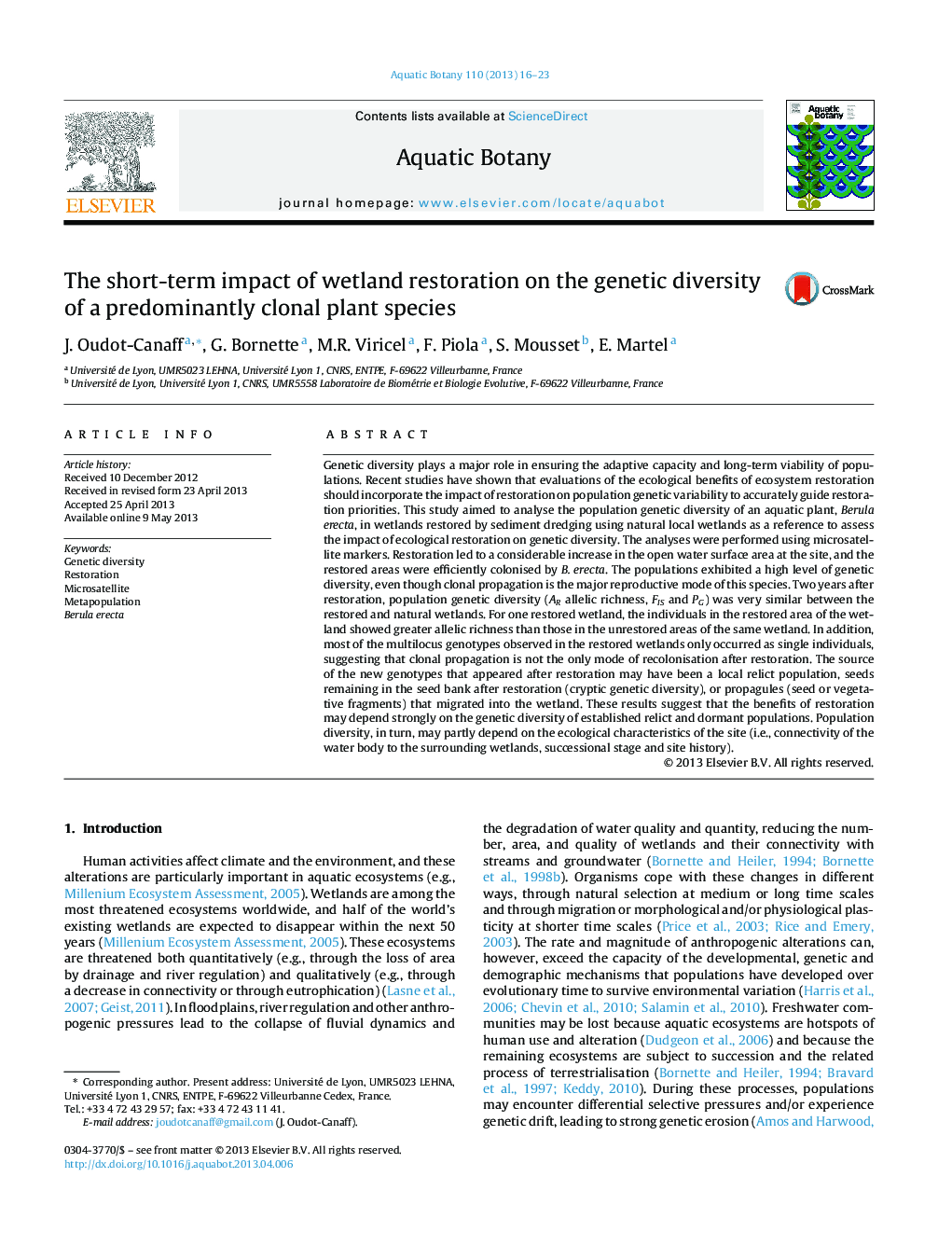| کد مقاله | کد نشریه | سال انتشار | مقاله انگلیسی | نسخه تمام متن |
|---|---|---|---|---|
| 6381747 | 1625832 | 2013 | 8 صفحه PDF | دانلود رایگان |
عنوان انگلیسی مقاله ISI
The short-term impact of wetland restoration on the genetic diversity of a predominantly clonal plant species
ترجمه فارسی عنوان
تأثیر کوتاه مدت بازسازی تالاب بر تنوع ژنتیکی گونه های گیاهی غالب از نوع کلونال
دانلود مقاله + سفارش ترجمه
دانلود مقاله ISI انگلیسی
رایگان برای ایرانیان
کلمات کلیدی
موضوعات مرتبط
علوم زیستی و بیوفناوری
علوم کشاورزی و بیولوژیک
علوم آبزیان
چکیده انگلیسی
Genetic diversity plays a major role in ensuring the adaptive capacity and long-term viability of populations. Recent studies have shown that evaluations of the ecological benefits of ecosystem restoration should incorporate the impact of restoration on population genetic variability to accurately guide restoration priorities. This study aimed to analyse the population genetic diversity of an aquatic plant, Berula erecta, in wetlands restored by sediment dredging using natural local wetlands as a reference to assess the impact of ecological restoration on genetic diversity. The analyses were performed using microsatellite markers. Restoration led to a considerable increase in the open water surface area at the site, and the restored areas were efficiently colonised by B. erecta. The populations exhibited a high level of genetic diversity, even though clonal propagation is the major reproductive mode of this species. Two years after restoration, population genetic diversity (AR allelic richness, FIS and PG) was very similar between the restored and natural wetlands. For one restored wetland, the individuals in the restored area of the wetland showed greater allelic richness than those in the unrestored areas of the same wetland. In addition, most of the multilocus genotypes observed in the restored wetlands only occurred as single individuals, suggesting that clonal propagation is not the only mode of recolonisation after restoration. The source of the new genotypes that appeared after restoration may have been a local relict population, seeds remaining in the seed bank after restoration (cryptic genetic diversity), or propagules (seed or vegetative fragments) that migrated into the wetland. These results suggest that the benefits of restoration may depend strongly on the genetic diversity of established relict and dormant populations. Population diversity, in turn, may partly depend on the ecological characteristics of the site (i.e., connectivity of the water body to the surrounding wetlands, successional stage and site history).
ناشر
Database: Elsevier - ScienceDirect (ساینس دایرکت)
Journal: Aquatic Botany - Volume 110, October 2013, Pages 16-23
Journal: Aquatic Botany - Volume 110, October 2013, Pages 16-23
نویسندگان
J. Oudot-Canaff, G. Bornette, M.R. Viricel, F. Piola, S. Mousset, E. Martel,
